West Pier: Potty Time?
Harbours correspondent ALLAN ROBERTS has identified another fatal flaw in Project Manager Helen JACKSON’s incoherent plan to ‘regenerate’ Scarborough’s West Pier.
SBC Harbours Portfolio Holder Councillor Janet JEFFERSON has been apprised of the information contained in this report.
~~~~~
The poor design of the proposed new warehousing on West Pier has already been covered in a previous article, “Carry On Regardless”. However, there is another aspect of the West Pier Regeneration Plan that has yet to be addressed.
That is the removal of pot storage areas, including the gated compound adjacent to the block of West Pier warehousing, scheduled to be demolished.
The compound was created around 2014, following a spate of vandalism, including arson attacks, on the gear stored on West Pier.
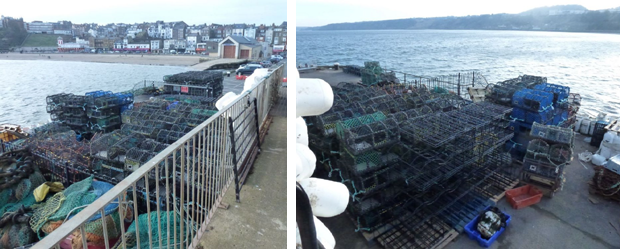
Since the creation of that compound, the shell-fishery has expanded dramatically and has outgrown the compound.
As a result, pots waiting for repair and maintenance can be seen in other areas, close to the warehouses.
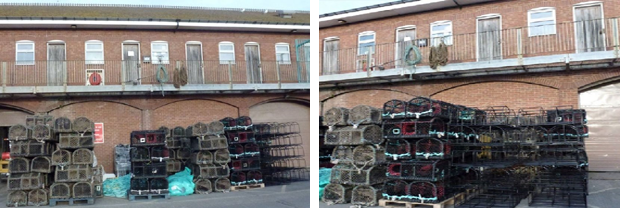
A conservative estimate of the number of pots presently in use by Scarborough’s 35-strong potting fleet would, I suggest, be around 25-30,000 pots, collectively.
The smaller boat (left, in the following image), for instance, works 900 pots, while the larger vessel will work 2,000 or more.
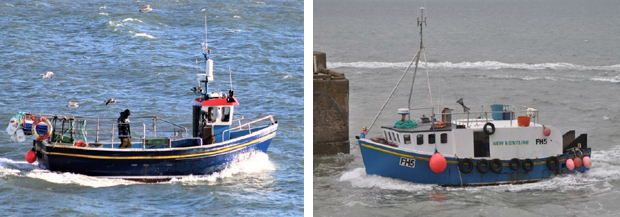
The large amount of gear necessary to sustain the shell-fishery has to be brought ashore on a continual basis, for repair and maintenance in the warehouses. To do so requires an area of quayside space in the area adjacent to the warehouses, where pots can be placed, if only for a temporary period, as repairs are carried out. Pots are also subject to marine growth in the form of weed, barnacles, etc. This need to be regularly removed by power-washing from time to time, which again requires quayside space conveniently located close to the davits and water supply.
That same space also needs to be close to the landing davits, as modern pots now weigh around 25-35 kilos apiece, (3-4st).
Pots are worked in ‘strings’ (fleets) of between 20 to 40 in length. When a fleet is brought ashore for maintenance, it is impossible to store them all inside the warehouses and leave enough working space to undertake repairs. Consequently, the pots are stored within the compound or outside the warehouses.
The Council’s West Pier Regeneration Plan states clearly that:
“A 10% increase in the capacity of the operational and processing facilities of the fishing industry is expected on West Pier.”
Despite that conservative forecast, the ‘regeneration’ plan actually compresses the industry into less space than it has now.
The plan is not only to remove the compound, but to also reduce the size of the present quayside space, by moving the building line of the proposed new warehousing closer to the edge of the pier.
The West Pier Regeneration Plan claims that by doing so,
“Incumbent fishermen would now working in an upgraded environment and able to work at higher levels of productivity, due to the design of the pier.
Positioning the servicing zone behind the new bait shed, allows for much better visibility across the pier and accessibility to the businesses within the buildings.
Improving the fisherman’s facilities will attract more vessels to the Pier, creating a more competitive environment.”
Those claims, I suggest, are utter nonsense.
Below are two comparable images of West Pier; one as it is now, and one downloaded from the West Pier Regeneration Plan on the website:
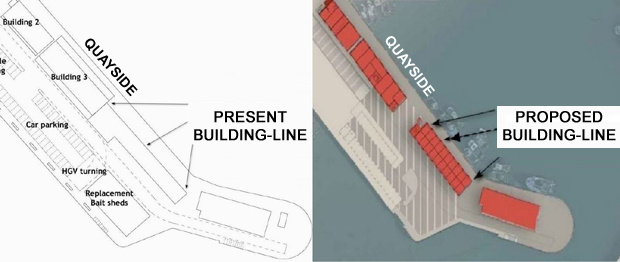
Comparing the present and proposed building lines, indications are that the building-line of the new warehousing will encroach upon the quayside space by around 5ft, thus narrowing the present width of around 23ft down to around 18ft.
In addition, that width is even further restricted in the area of the mooring bollards and the landing davit bases, which narrow parts of the quay by a further 3.5ft, thus reducing the present 23ft-wide access area to a width of a mere 14.5ft.
The West Pier quayside is the only place for the fleet to land their catch and, with the regular use of fork-lift trucks, refuelling tankers, etc, is already a hive of activity.
Here are recent images that illustrate how important the quayside space is to the fishing industry, and how narrow and congested it already is at the present time.
Self-evidently, reducing this working/manouevering width by over a third (37%) represents a significant risk to Health & Safety.

Despite this, the ‘regeneration’ plan intends to service all the buildings and premises on West Pier from the quayside of the pier, and to route all traffic, other than HGV’s along the quayside. For the avoidance of doubt, I use the term ‘quayside’ to designate the whole of that side of the West Pier facing into the Harbour, including where the landing davits are located.
It is clearly apparent that the West Pier Regeneration Team have neither understanding of, nor consideration for, the shore-side spacial requirements of the fishing industry.
Think again, Ms Jackson!


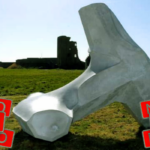
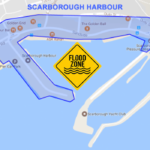


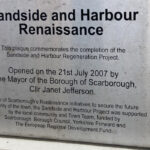
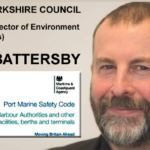


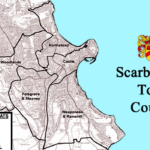
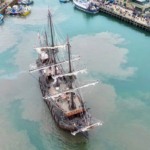















Comments are closed.